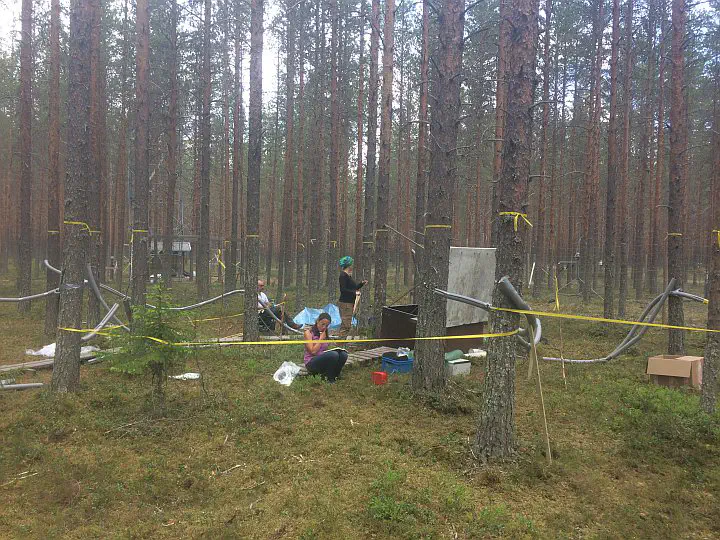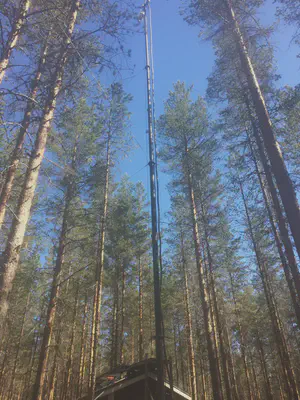Rosinedal Scots Pine Forest, Sweden

The mature Pinus sylvestris (PS) forests in Rosinedal, Sweden, (64°10′ N, 19°45′ E) were regenerated with seed trees in 1920–1925, pre- commercially thinned in 1955, and thinned in 1976 and 1993, respectively. These forests have been used for long-term fertilization experiment with control (PSMC) and fertilized (PSMF) stands located ~2 km apart. The area of each stand is ~15 ha, and there is a flux tower in the center of each stand. Fertilizer of 100 kg N·ha−1·yr−1 was applied to PSMF from 2006 to 2011 and a reduced rate of 50 kg N·ha−1·yr−1 has been used afterwards . The young, regenerating P. sylvestris forest (PSY) was in Åheden (~7 km from Rosinedal).
The understory of both stands is characterized by a field layer of dwarf shrubs, (Vaccinium myrtil lus and V. vitis-idaea) and a ground layer of mosses (Pleurozium schreberi and Hylocomium splendens) and lichens. These forests share similar soil texture of well-drained, deep sandy sediment with 2–5 cm soil organic layer and bulk density and porosity (in the top 10 cm) of 1230 kg/m3 and 0.49. The 30-year mean annual temperature and precipitation (1981–2010), measured at the Svartberget field station (8 km from PSMC and 1 km from PSY) were 1.8°C and 614 mm, respectively. On average, the area is covered by snow from early November to late April.
